SOLID STATE quantum optics LAB
Selected Projects
Development of High-Quality Micromirrors and Waveguides Using Focused Laser Template Fabrication
In order to obtain strong interactions between light and single quantum emitters, we are developing micromirror-based Fabry-Perot microcavities. A microcavity recirculates light at a resonant frequency within a small volume (typically on the order of less than 10 cubic microns) giving rise to a light matter coupling that is enhanced compared to free-space. In order to obtain the smallest possible mirrors yet with the highest possible reflectivity (>99.99%), templates with ultra low surface microroughness are required. Laser ablation provides an ideal tool to create and reflow such templates on glass.
Cavity Quantumelectrodynamics with all-epitaxial microcavities
Left: Micromirror template fabricated at the tip of a 125 micron diameter single mode fiber. Right: Micromirror template fabricated on a fused silica substrate.


Cavity Quantumelectrodynamics with Tunable Open Microcavities
Fabry-Perot type microcavities can be conveniently frequency-tuned by changing the separation between mirrors with a piezoelectric transducer. Furthermore, a gas, liquid or any active emitter/absorber such as a quantum dot can be introduced inside the cavity and interact with the cavity field. However, the cavity must be carefully aligned and stabilised.
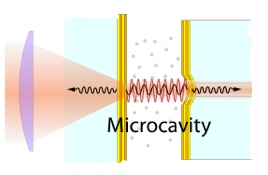
Left: Microcavity based on dielectric high reflectivity mirrors. Right: Microcavity based on one curved dielectric mirror and one semiconductor mirror that also contains semiconductor quantum dots. The quantum dots, which behave approximately like atomic two-level systems, can be selectively coupled to the optical microcavity.
Optical Spectroscopy of Semiconductor Quantum Dots
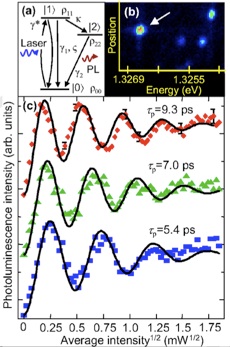
Semiconductor quantum dots are solid objects consisting of thousands to tens of thousands of atoms. These nanoscale objects, typically embedded within a bulk semiconductor crystal have optical properties analogous to those of isolated two or multilevel atoms. As such they are interesting candidates for future solid state quantum optical devices that rely on quantum mechanical properties of matter. Quantum dots can for example generate photons individually, in a way that is useful as a single photon turnstile. Because of discrete energy and spin states, quantum dots are furthermore attractive for solid-state quantum information science and cavity quantum electrodynamics. At cryogenic temperatures quantum dot states can be coherently manipulated with laser fields. Collaborators: K. Shih (UT Austin), D. Deppe (UCF), G. Solomon (JQI/NIST).
Left: Photoluminescence data from a single InAs/GaAs semiconductor quantum dot that is manipulated with a pulsed laser. Rabi oscillations are the hallmark for quantum coherent control.

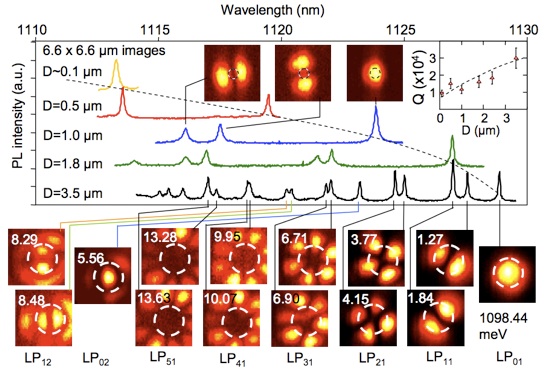
Monolithic optical microcavities containing semiconductor quantum dots offer a scalable integrated approach to cavity quantumelectrodynamics. Integrated optical microcavities have potential as optoelectronic components. The all-epitaxial cavities developed by the group of D. Deppe are particularly attractive due to their buried yet waveguide-coupled design. Collaborators: D. Deppe (UCF)
Top: Schematic and surface AFM image of an all-epitaxial microcavity. Bottom: Experimentally measured spectral and spatial mode structure of all-epitaxial microcavities of various sizes.
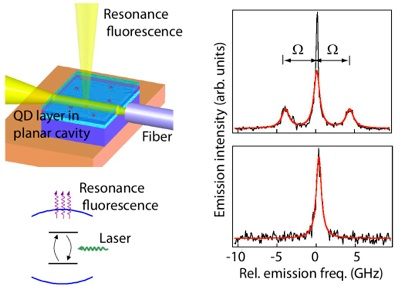
Right: Resonance fluorescence measurement from a single semiconductor quantum dot driven by a continuous-wave laser. An orthogonal excitation/detection geometry using planar waveguiding is utilised to obtain background free detection. When the laser is strong enough (right upper panel), the emission spectrum of the QD turns into the familiar three-peaked Mollow triplet.
© 2022 Solid State Quantum Optics Lab.
Motivated Graduate and Undergraduate students interested in joining the group should contact Dr. Muller:
Office: ISA 4217 | Phone: (813) 974-2577 | Email: mullera@usf.edu



National Science Foundation support: DMR No. 1254324
Defense Threat Reduction Agency support: HDTRA No. 12-1-0040


National Science Foundation support: ECCS No. 2116275
Microcavity Purcell-Enhanced Raman Scattering
Purcell first observed that the presence of reflectors in the vicinity of an emitter can significantly alter its spontaneous emission rate. This effect is now well-known for the case of two-level fluorescence from atoms. It is also the subject of intensive research in single quantum emitter solid-state cavity quantumelectrodynamics in the context of single-photon generation for quantum communication applications. Its ubiquity in fluorescence measurements notwithstanding, the Purcell effect has been studied much less for the case of Raman scattering. Enhancement of spontaneous Raman scattering is however highly desirable, particularly in gases that have notoriously weak scattering cross-sections. We have observed Purcell enhanced spontaneous Raman scattering in three-dimensionally-confining optical microresonators. It involves creating a pump/Stokes double resonance which critically depends on the frequency-dependent dielectric mirror phase shifts. Highlights include the detection of spontaneous Raman scattering from only order 105 molecules in a microscopic volume.
Multiphoton Spectral Characterization of Light
Photon correlations are the primary tool for characterizing light-matter interactions at the few or single quantum level. In principle, if photon correlation functions to all orders were known, all measurable properties of a given light source would be known. A fascinating development in the understanding of photon statistics has been the generalization by del Valle et al. of frequency-resolved photon correlations into a “N-photon spectrum”, a quantity g(N) (τ1,ω1;...;τN,ωN) proportional to the joint probability of detecting a photon in channel 1 at time τ1 filtered at frequency ω1, a photon in channel 2 at time τ2 filtered at frequency ω2,..., and a photon in channel N at time τN filtered at frequency ωN. We are now able to record this quantity experimentally which can be visualized by a 2 dimensional map at second order, and by a cube at third order.
Slow-Fast Dynamics in High-Finesse Microcavities
The resonant buildup of photons inside a high-finesse optical microcavity can routinely produce circulating intensities of order Icirc ∼ 100 MW∕cm2 even when the laser input power is only a few milliwatts. At such intensities, the circulating photons may deform the cavity boundaries to such an extent as to affect the cavity resonance condition, and thus the circulating photon flux. An interesting situation arises when two or more light- induced processes act oppositely and on different time scales, such that the system dynamics are governed by a set of coupled differential equations that resemble those found in the physics of chemical reactions, neural networks, and other natural systems. We are interested in these dynamics in the context of cavity optomechanics which is concerned with the back-action of mechanical deformations onto the optical fields that generate them. In particular, we study thermomechanical mirror deformations in high finesse Fabry-Perot cavities which act on picometer length scales and give rise to “slow-fast” nonlinear oscillations.
Multipass Enhanced Raman Scattering within Multimode ECDL
Due to its inherent simplicity and versatility, spontaneous Raman scattering is ideally suited for chemical gas analysis. However, with a small scattering cross-section, the process typically requires an enhancement method, of which the most famous example is probably surface enhanced Raman scattering. In recent years, many other approaches have been developed, such as cavity, capillary, hollow core fiber, and Purcell-enhanced Raman scattering, some of which have demonstrated gas sensing capabilities in the parts-per-million range. The primary goal of this project is to develop a novel method expected to offer dramatic improvements, in particular, detection limits in the parts-per-billion range, while employing a low-cost compact design. The novel approach is based on a multipass cavity integrated as part of an external cavity diode laser. These efforts could pave the way for versatile “artificial noses” that could be widely deployed in industrial process control, medical diagnostics, and environmental sensing.
Below: “Slow-fast” thermomechanical microcavity oscillations observed on different timescales and finite element simulation of heating profile near mirror center.
Resonance fluorescence from a single semiconductor quantum dot is an ideal test source for characterizing the two (right) or three (bottom) photon spectrum. A rich landscape of transitions is uniquely revealed. The underlying correlations can be used for example as generators of Franson interference and time-energy entanglement.
Purcell-enhanced Raman scattering was demonstrated by engineering a double resonance for the Q-branch CO2 band near 1388 cm-1. On the right various embodiments of microcavity configurations are shown. In the most extreme case, the volume of gas tested is a the 10 cubic micron scale.
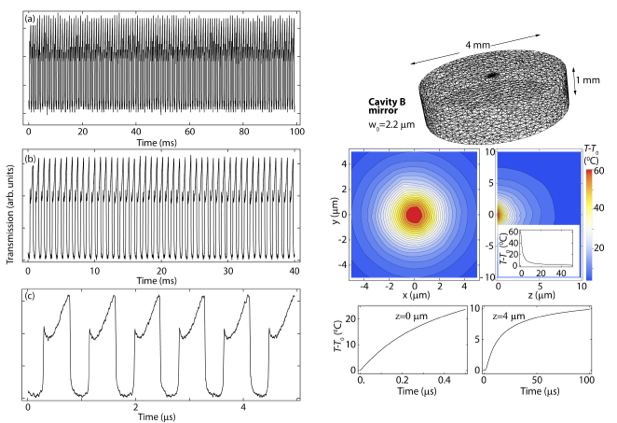
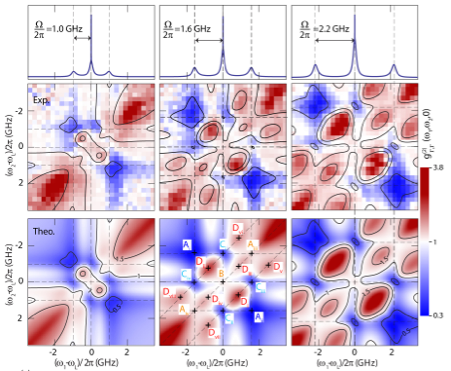
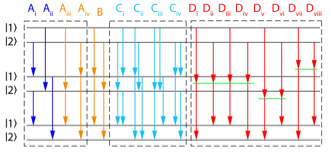

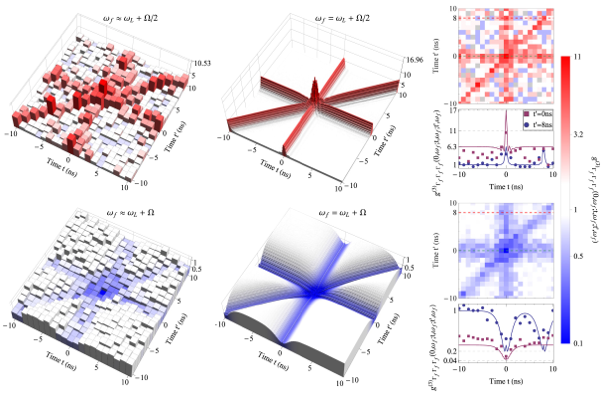
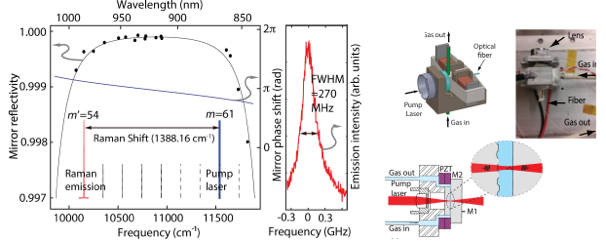
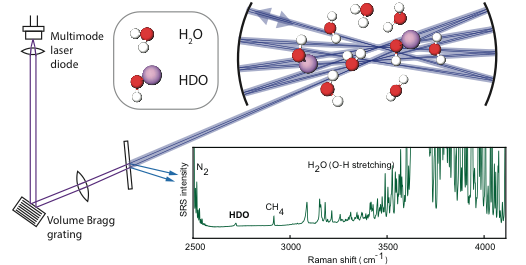
Above: Trace measurement using multipass enhanced Raman scattering in external cavity diode laser configuration. A high power multimode laser diode is coupled to a multipass cavity via a volume Bragg grating. The multipass cavity is aligned in such a way that the pump laser light returns and provides feedback to the laser diode. The spontaneous Raman emission from a test gas inside the cavity is collected collinearly and spectrally analyzed. The spectrum shows a measurement of HDO (semiheavy water) in atmospheric air evaporated from a liquid sample. On average one out of 3200 ambient water molecules is HDO instead of H2O, where D stands for deuterium.
